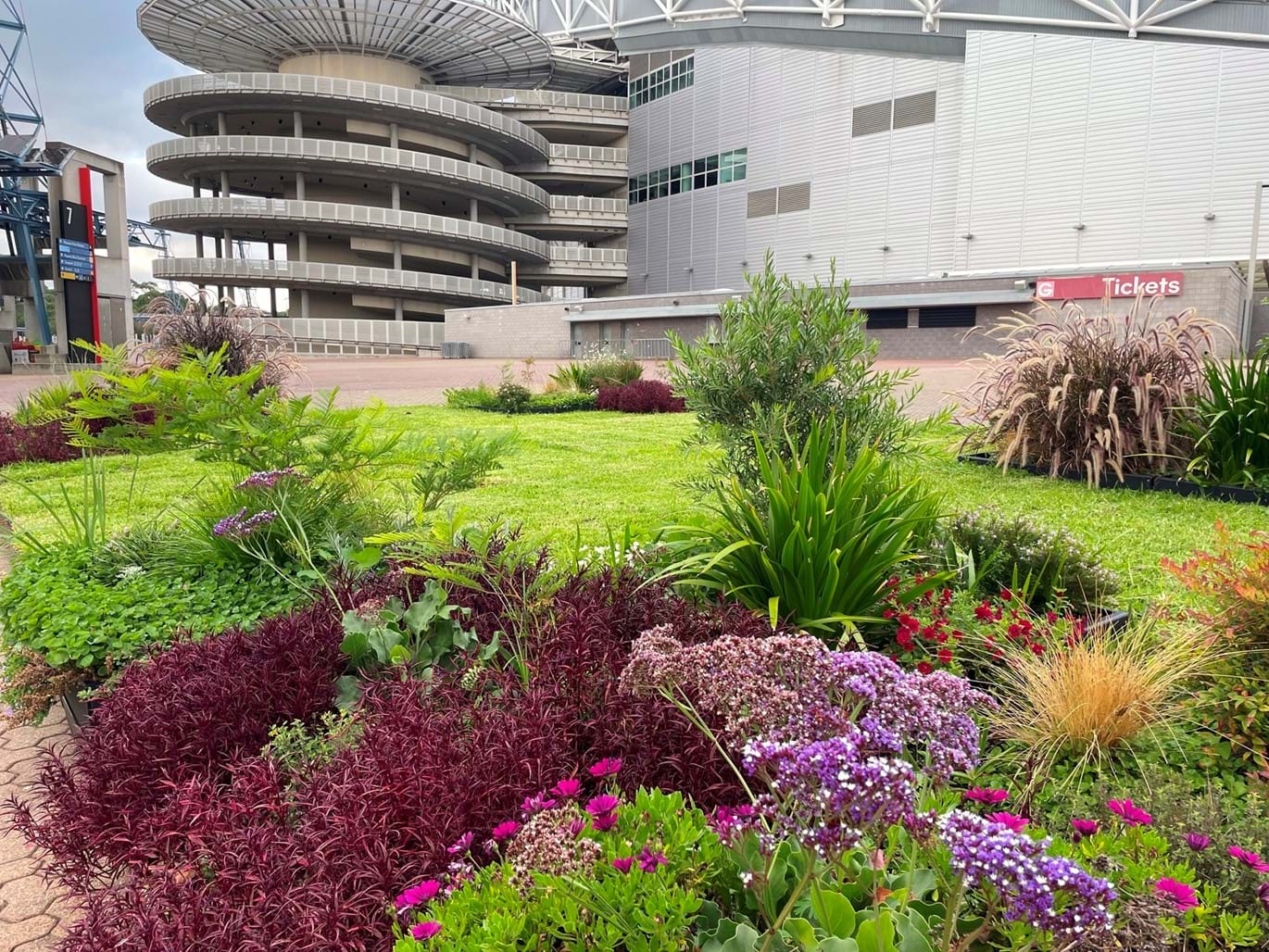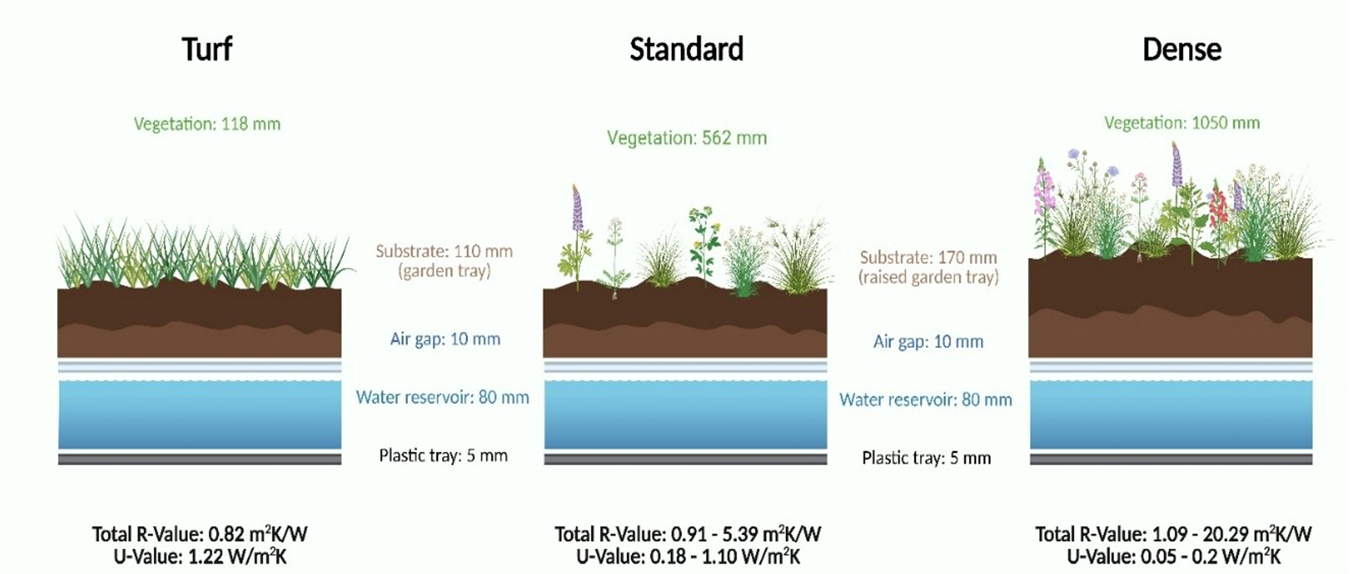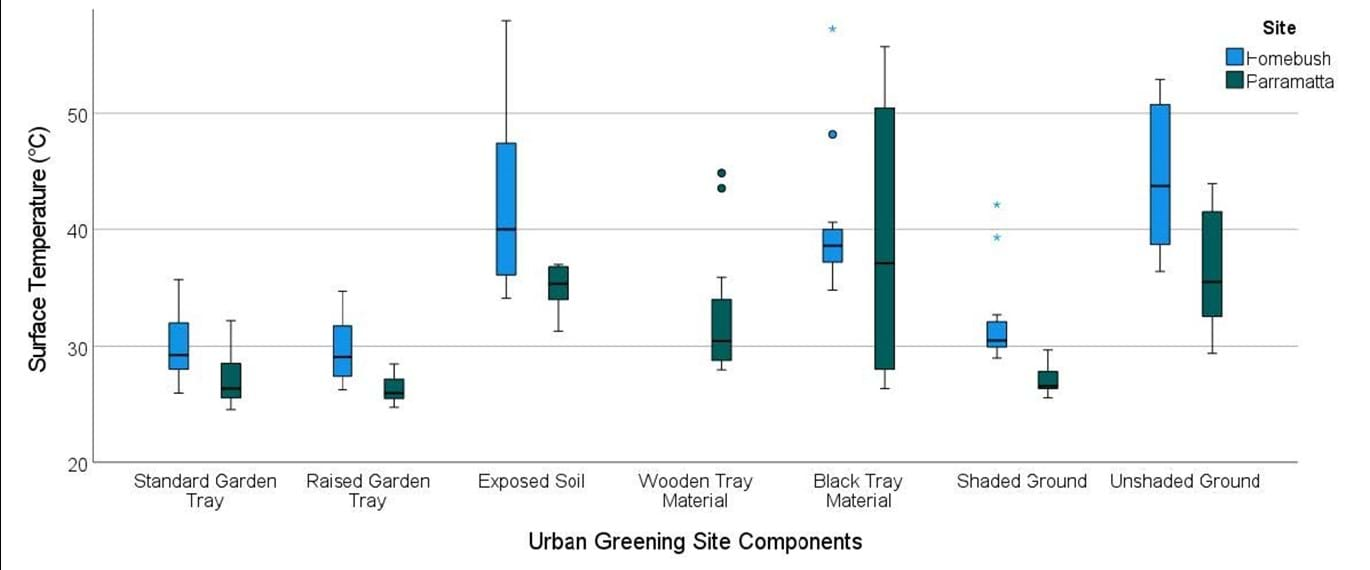Floating Gardens for Targeting the Urban Heat Island Challenge: Phase 2
The Small Business Innovation & Research (SBIR) program is an innovation challenge program funded by the NSW Government and administered by the Department. The SBIR program provides competitive grants for NSW-based small and medium enterprises (SMEs) to find and commercialise innovative solutions to well-defined problems for NSW Government agencies.
NSW Department of Planning, Housing and Infrastructure was the Challenge Agency for this SBIR Challenge through the Feasibility Study (Phase 1) and Proof of Concept (Phase 2 ) phases of the SBIR program.
This final report covers the proof of concept (Phase 2) for the Future Village Floating Garden tray system to provide an efficient nature based solution to mitigate the urban heat island effect.
The floating gardens were installed at three trail sites (Accor Stadium, Sydney Olympic Park, Parramatta Square, Parramatta and on a roof top at the University of Technology Sydney).

Floating Garden test site - Accor Stadium
Executive Summary
Nature Based Solutions have emerged as an efficient alternative to mitigate the negative effects caused by traditional unsustainable building materials which are characterised by high thermal capacities. New engineered solutions such as green roofs and urban parklets are comprised of different vegetation types, substrates and drainage layers resulting in effective evapotranspiration and localised cooling which can be utilised in urban centres to reduce rises in surface temperatures, also known as the urban heat island effect phenomenon.
With minimal load bearing and low structural support requirements, green roofs have experienced an increase in implementation across Sydney’s metropolitan areas, with proof-of-concept studies recording green roof cooling effects on rooftops of 1.5-4.0˚C. On the ground level, urban greening can also occur at a smaller scale in the form of pop-up parks, or parklets, which not only provide biodiversity corridors but also have been shown to reduce ground level surface temperatures by around 1.3˚C.
Recently, novel parklets retrofitted with green roof characteristics have been installed in the Greater Sydney Region: Accor Stadium, Sydney Olympic Park, Parramatta Old Town Hall, and the University of Technology, Sydney (UTS) Building 7 Rooftop. Thus, the objective of this study was to combine laboratory and in-situ investigations to provide an empirical assessment of the thermal behaviour of various green infrastructure components during the summer season between December 2024 to March 2025, with the aim to inform the planning process for optimised cooling outcomes.
Thirty-five plant species and eighteen substrate samples were incorporated within this work, with dense garden and turf modules recording the most significant cooling capabilities. Larger scale urban greening installation at both Homebush and Parramatta showed a marked reduction in surface temperatures. Garden beds experienced an average mean surface temperature range between 25 to 35⁰C compared to traditional exposed pavements which ranged from 35 to 55⁰C during the experimental period. Overall strong evidence was found for the continued application of these urban greening solutions to reduce high heat exposure within pedestrian spaces. It is recommended when planning installations of such infrastructure, that dark coloured, low albedo materials are at risk of negating the cooling effect provided by the vegetation in these systems.
Modelling was conducted to determine
(1) What spatial arrangement provides optimal cooling?
(2) How many units are needed for cost-effective cooling? Findings suggested that a two row street level arrangement offers the best balance between cooling, airflow, and walkability, distributing cooling more evenly and benefiting pedestrians more than centralized clusters, which primarily cool inaccessible street areas.
Scaling simulations show that while adding more units improves cooling, the benefits level off beyond 24 units and air circulation decreases; thus, 10–24 units are recommended for a 100 m street.
On a hot day of 36 °C, the modelling indicated that the floating gardens reduce street surface temperature by up to 30 °C and air temps by 10 °C, with the cooling effect strengthening in extreme heat, lowering air temps at pedestrian sitting height by 1.39-2.26 °C.
Authors
University of Technology Sydney
Dr Peter Irga – Chief Investigator Dr Yuhan Huang – Principal Investigator A/Prof Fraser Torpy – Principal Investigator Gabrielle Duani - PhD Research Scientist Qingyun Wu – PhD Research Engineer Luowen Lyu - PhD Research Engineer Stephen Matheson - Research Scientist Ralph Fares - MSc Research Scientist
Western Sydney University
Prof Sebastian Pfautsch- Partner Investigator

R and U values of the floating garden

Box plots represent the distribution of mean surface temperatures captured in over 800 FLIR images at both Homebush and Parramatta sites, as distinguished by their infrastructure components.

Air temperature contours at pedestrian sitting height (y = 0.8 m) for C3 (no Floating gardens), A11 (19% coverage ratio) and A12 (39% coverage ratio) under 40 °C air temperature.